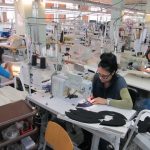
EU
Macro: According to Eurostat data, the consumer price index (CPI) rose 7% year-on-year in April, higher than the 6.9% increase in the previous month. The European Commission released the Spring 2023 Economic Outlook Report, predicting that the EU economy will grow by 1.0% and 1.7% in 2023 and 2024, respectively, which is better than the 0.8% and 1.6% predicted in the Winter Outlook Report in February this year. It also expects EU inflation to reach 6.7% in 2023 and fall to 3.1% in 2024.
Retail: According to the latest data from Eurostat, retail sales in the European Union fell by 4.1% year-on-year in March, which continued to expand from the 2.2% decline in the previous month, and fell by 1.1% month-on-month. The German Retail Industry Association predicts that about 9,000 retail companies in Germany may declare bankruptcy this year. Economists have warned that Germany, Europe’s largest economy, is likely to slip into recession after factory orders, retail sales and exports also fell sharply.
Import: From January to March, the EU’s clothing imports were US$24.48 billion, a year-on-year decrease of 7.9%. Imports from China were US$6.27 billion, a year-on-year decrease of 20.6%; accounting for 25.6%, a year-on-year decrease of 4.1 percentage points. Imports from Bangladesh, Turkey, India and Vietnam increased by 2.6%, -13%, 3.5% and 2.6% year-on-year respectively, and their proportions increased by 2.3, -0.7, 0.8 and 0.5 percentage points respectively.
Japan
Macro: According to data from the Japanese Ministry of Internal Affairs and Communications, the average household expenditure in March decreased by 1.9% year-on-year, the largest drop in a year; the chain continued to decline by 0.8%. Real wages in Japan fell 2.9% year-on-year in March, the 12th consecutive month of decline.
Retail: According to adjusted data from the Ministry of Economy, Trade and Industry of Japan, Japan’s seasonally adjusted retail sales of all commodities in March increased by 7.2% compared with the same period last year, and the growth rate has expanded for five consecutive months; the month-on-month increase was 0.6%. From January to March, Japan’s textile and apparel retail sales totaled 2.1 trillion yen, a year-on-year increase of 3.6%, and a decrease of 21.5% from the same period before the epidemic. In March, the retail sales of textile and clothing in Japan was 723 billion yen, a year-on-year decrease of 0.5%, and a decrease of 24.8% compared with the same period before the epidemic.
Import: From January to March, Japan’s clothing imports were US$6.59 billion, a year-on-year increase of 2.4%. Imports from China were US$3.3 billion, a year-on-year decrease of 7.5%; accounting for 50.1%, a decrease of 5.3 percentage points. Imports from Vietnam, Bangladesh, Myanmar and Cambodia increased by 17.4%, 2.9%, 51% and 10.5% year-on-year respectively, and their proportions increased by 2, 0.03, 1.7 and 0.4 percentage points respectively.
UK
Macro: According to data from the British Bureau of Statistics, the UK’s consumer price index (CPI) rose by 8.7% year-on-year in April, a slowdown from the 10.1% increase in March, but the year-on-year increase in core CPI accelerated from 6.2% in March to 6.8% . The Bank of England expects inflation in the UK to fall sharply in 2023, but remains concerned that a sharp drop in energy prices will not be able to reduce price pressures.
Retail: In April, the British retail industry continued to show a steady growth recovery. According to data released by the Office for National Statistics, UK retail sales in April increased by 0.5% compared with March and increased by 5.1% compared with the same period last year. In the February-April period, UK retail sales rose 0.8% from the previous three months, the biggest increase since the three-month period ending August 2021. So far, consumer demand has been fairly resilient to high inflation and rising interest rates, said Paul Martin, head of UK retail at KPMG.
From January to April, the retail sales of textiles, clothing and footwear in the UK totaled 18.4 billion pounds, a year-on-year increase of 13.3%, and an increase of 12.4% over the same period before the epidemic. In April, the retail sales of textiles, clothing and footwear in the UK were 4.33 billion pounds, a year-on-year increase of 9.5%, and an increase of 10.1% over the same period in 2019.
Import: From January to March, the British clothing import was 5.48 billion US dollars, a year-on-year decrease of 13.3%. Imports from China were US$1.23 billion, a year-on-year decrease of 27.2%; accounting for 22.4%, a year-on-year decrease of 4.3 percentage points. Imports from Bangladesh, Turkey, India and Italy increased by 1.7% and -19% year-on-year respectively.
Australia
Retail: Data from the Australian Bureau of Statistics showed retail sales rose 0.4% month-on-month in March. Spending fell in all categories except food and eating out. Australia’s retail sales rose for a third straight month in March, largely driven by higher food prices. Food retail sales have grown for 13 straight months, driven by high food inflation. “Non-food retail spending slowed due to rising interest rates and increased pressure on the cost of living,” said the head of retail statistics at the Australian Bureau of Statistics.
From January to March, the retail sales of clothing, apparel and footwear stores totaled 8.88 billion Australian dollars, a year-on-year increase of 8.8% and a year-on-year increase of 38.8%. The monthly retail sales in March were 2.94 billion Australian dollars, an increase of 3.6% year-on-year, and an increase of 37.2% over the same period in 2019. From January to March, the retail sales of department stores were 5.65 billion Australian dollars, a year-on-year increase of 9.4%, and an increase of 21.9% over the same period in 2019. The monthly retail sales in March were 1.89 billion Australian dollars, a year-on-year increase of 4.7%, and an increase of 22.7% over the same period in 2019.
Import: From January to March, Australia’s clothing imports were US$2.42 billion, a year-on-year decrease of 2%. Imports from China were US$1.44 billion, a year-on-year decrease of 5.6%; accounting for 59.8%, a year-on-year decrease of 2.2 percentage points. Imports from Bangladesh, Vietnam, India and Indonesia increased by 10.6%, 8.8%, -3.1% and 3.2% year-on-year respectively, and their proportions increased by 1.3, 0.6, -0.04 and 0.2 percentage points respectively.
Canada
Retail: According to Statistics Canada, Canadian retail sales in March were 65.3 billion Canadian dollars, down 1.4% from the previous month, mainly due to lower sales at gas stations, fuel suppliers and general merchandise retailers. Core retail sales rose 0.3%. Preliminary estimates of April retail sales rose 0.2%.
From January to March, the retail sales of clothing and apparel stores in Canada were 8.47 billion Canadian dollars, a year-on-year increase of 13.7%, and an increase of 17.6% over the same period in 2019. Retail sales in March were 2.84 billion Canadian dollars, an increase of 7.5% year-on-year, and an increase of 16.6% over the same period in 2019. From January to March, the retail sales of furniture and home stores were 5.91 billion Canadian dollars, a year-on-year decrease of 5.7%, and an increase of 17.9% over the same period in 2019. Among them, retail sales in March were 1.96 billion Canadian dollars, a year-on-year decrease of 6.2%, an increase of 15.4% over the same period in 2019.
Import: From January to March, Canadian clothing imports were US$2.94 billion, a year-on-year increase of 7.7%. Imports from China were US$840 million, a year-on-year decrease of 1.8%; accounting for 28.6%, a year-on-year decrease of 2.8 percentage points. Imports from Bangladesh, Vietnam, Cambodia and India increased by 3.9%, 21.3%, 21% and 15.2% year-on-year respectively, and their proportions increased by -0.5, 1.4, 1 and 0.3 percentage points respectively.

Brand Dynamics
Adidas: In the three months ended March 31, Adidas sales did not increase year-on-year, recording 5.274 billion euros, gross profit margin fell from 49.9% to 44.8%, and a net loss of 30 million euros. Adidas Greater China revenue fell nearly 12% to nearly 884 million euros, the North American market also fell 16% to 1.177 billion euros, other Asia-Pacific markets increased 12% to 567 million euros, and Latin America rose 42.6% to 595 million euros.
Boohoo: In the 2023 fiscal year as of the end of February, Boohoo’s revenue fell 11% year-on-year to 1.768 billion pounds, down 13% at a constant exchange rate, and its gross profit margin fell from 54% three years ago to 50.6%. By region, Boohoo’s UK sales fell by 9%, and international revenue fell by 13% year-on-year.
Canada Goose: In the three months ended April 2, sales of Canada Goose surged 31.4% year-on-year to 293 million Canadian dollars, mainly benefiting from sales growth in China, Europe, the Middle East and Africa, and operating profit compared with the same period last year. C$900,000 recovered to C$17.2 million, but the net loss hit C$3.1 million due to global inflation and higher costs related to brick-and-mortar store expansion, Japanese joint ventures and other areas.
Hugo Boss: In the first quarter, the German high-end clothing group Hugo Boss’s sales rose 25% year-on-year to 968 million euros, approaching the 1 billion euro mark. It achieved double-digit growth in all regions and channels around the world, and its profit before interest and taxes also rose by 63%. to 65 million euros. Based on good performance, Hugo Boss expects sales to increase by 10% to 4 billion euros this year.
Puma: In the three months up to the end of March, Puma sales increased by 14.4% year-on-year to 2.188 billion euros, but net profit fell 3.4% to 117 million euros. Divided by category, footwear sales rose 28.8% to 1.21 billion euros, clothing sales increased 1.5% to 648 million euros, and accessories revenue fell 1.7% to 329 million euros.
Uniqlo: According to the latest performance report released by Fast Retailing Group, Uniqlo Japan’s same-store sales in April increased by 1.7%, and total sales including online sales increased by 5.9%, mainly due to the popularity of the spring and summer clothing series that followed the trend.
Zalando: European e-commerce giant Zalando’s total merchandise volume in the first quarter increased by 2.8% to 3.242 billion euros, revenue increased by 2.3% to 2.255 billion euros, and the adjusted loss before interest and taxes was 700,000 euros, compared with the previous year’s loss of 52 million euros. Great improvement. During the reporting period, the number of Zalando active customers increased by 4.8% to 51.2 million compared with the same period last year.



